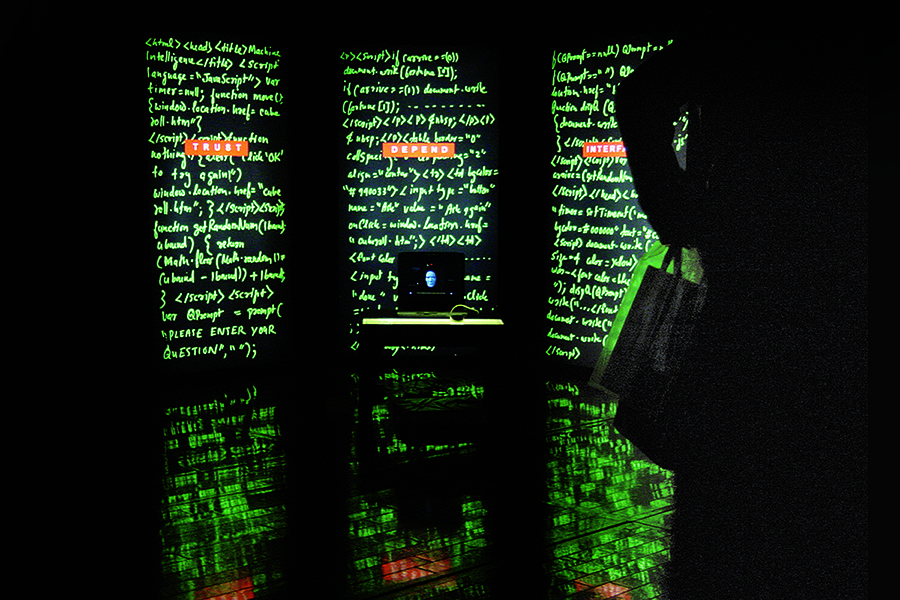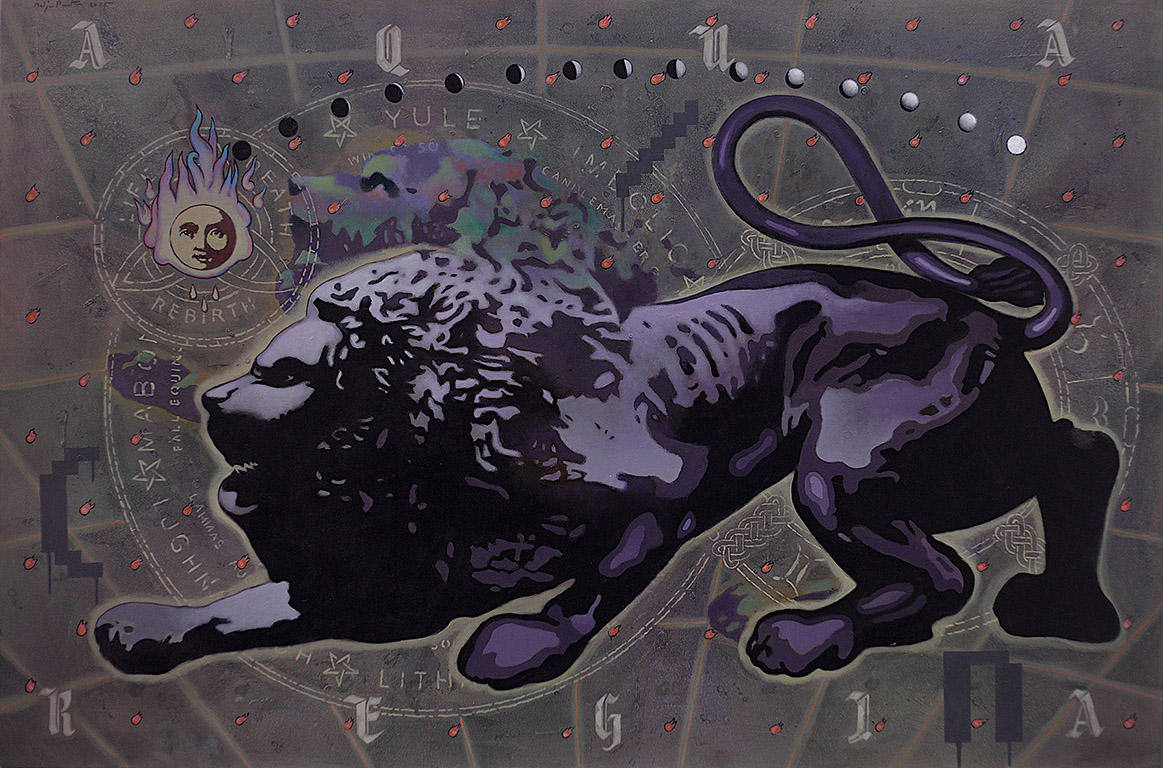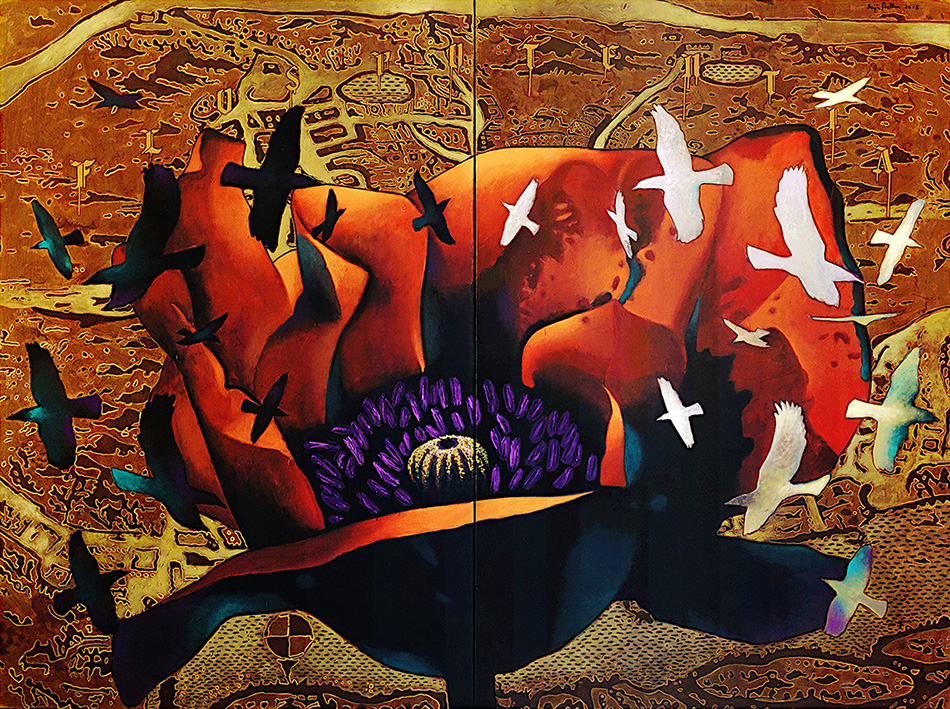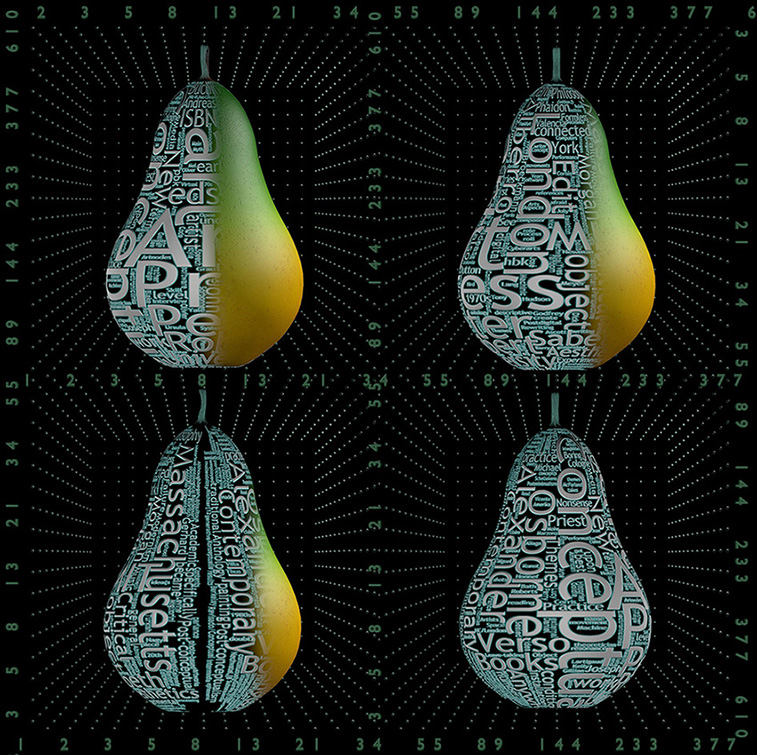|
CV
IMAGES
TEXTS
PUBLICATIONS
|
|
 |
|
|
 |
|
|
|
|
|
|
CODE'-Futurz, machine, Interactive digital installation,
2000-2004,
backlit-print on polyester and computer technology, dimensions
variable.
To
be frank, my intention while producing this work was to phase-shift
something that appears mundane into something that is intriguing and
transcendental. The artwork's core idea is to show how computer code
(Displayed on lightboxes as a handwritten passage) transforms into a
simulation of intelligence and awareness within the innards of the
machine. JavaScript code displayed on the lightboxes works as a random
key generator within the computer to bring up and display predictions
from a collection of I-Ching readings in response to questions from the
viewer. The overall experience evokes the presence of a trustworthy
'ghost in the machine' that offers advice.
|
|
|
Aqua Regia, 2015,
acrylic on canvas, 48 x 72 inches.
Shifting to an exploration of symbolism, Baiju Parthan’s Aqua Regia takes
alchemy as its language, to contest rebirth through elemental
transformation and attainment of perfection. Parthan’s considered space
is the process of myth-making in the context of alchemy. Aqua Regia
(royal/noble water), a mixture said to dissolve gold and platinum,
resounds with the Philosopher's Stone. Denoted here by the rearing lion
with the symbol of rebirth in the form of the sun and phases of the moon
above its head, Parthan’s symbol for royalty also stands in for the
ascension of man attaining supremacy over nature-based belief systems.
The foundational myth of the enlightenment, the primacy of reason over
belief, and the scientific organization of knowledge are here enconsed
in the symbology of alchemy deftly linking the attainment of knowledge
to a far older knowledge - in the need for mythmaking and symbolism.
Framed in the background against the
latitudes and longitudes of our planet, Parthan perhaps suggests that
myth-making continues to evolve in relation to the symbols of our
primacy - those symbols, now quantified measurements. If rational
knowledge is implicated by political machinations, Parthan thus begs the
question: in the contested space of quantifiable knowledge and evolved
politically-implicated symbolism, what are the possibilities for
myth-making, when our primacy is constructed as nearly absolute in every
sense?
|
|
|
|
|
|
|
|
|
|
|
 |
|
|
 |
|
|
Flos Potentia (Flower
Power), 2016, acrylic on canvas, 72 x 96 inches (diptych). Private
Collection.
Obviously any painting is open to interpretation and to any number of
readings depending on the inclination of the viewer. However here is
what went into it from my side in the making of it.
The painting 'Flos Potentia' is an
amalgam of histories pertaining to Goa, and a certain amount of personal
history. The metaphoric intertwining of histories and world-views is
suggested by the background derived from the iconic map of Goa (A Ilha e
Cidade de Goa Metropolitana da India) by Jan Hugen van Linschoten in
1596 which served as the template of almost all the other medieval maps
of Goa. Overlapping and eclipsing the map is a poppy flower (Botanical
name- Papaver Somniferum) the oldest known psychotropic plant to be
cultivated as far back in 3400 BC in ancient Mesopotamia.
The title of the painting is a reference
to the 'Flower power' movement, a confluence of free-thinking,
existential searching, and psychedelic exploration which played out its
last act on the beaches of Goa before vanishing into thin air. The poppy
flower as a metaphor becomes the threshold marking the entry point into
the domain of the metaphysical with its perception shifting potential.
The suggestion that psychedelic substances and their ritualistic usage
has played a major role in the evolution of language, as well as art and
culture in the form of an epigenetic agent, is much more than a mere
hypothesis as presented by psychedelic researchers such as Terrance
Mackenna, Ralph Metzner and others, though not endorsed by mainstream
scientific community. The flock of birds differentiated into groups of
black and white colour represent the binaries of light and darkness, and
the in-between twilight zone as the doorway into the unknown.
The title also alludes to the role of
Portuguese base in Goa for introducing opium to China at the beginning
of the 18th Century and the resulting opium trade (Later monopolised by
the British East India Company).
As for personal history, after spending
a number of years studying Botany and a certain amount of time grappling
with Civil engineering in Kerala, I ended up in Goa as a Visual Arts
student at the Goa College of Art Panjim in 1976. I spent roughly six to
seven years in Goa and those years reshaped my values and my approach
towards life in general. From that position, the painting sums up my
experience of Goa as a doorway into life-transforming experiences.
|
|
|
Post Conceptual Pear, 2019,
animated 3D lenticular print, (four views),
41.5 x 41.5 inches
My work for the show is a 3D Lenticular print titled ' Post conceptual
Pear - Four views'. This work is derived from virtual objects sculpted/modelled
in three dimensions using software tools.
I felt it is rather ironic that not
long ago I was speaking about the erosion of 'tactility’ in our reality
experience due to digitisation, through my 'soft graffiti’ paintings.
And here I am making art with material that is virtual and devoid of
tactility. Interestingly, Some years ago while I was having a show of
my soft graffiti paintings in New York, I met Robert C Morgan who is the
de facto premier post-conceptual artist and theorist. He was intrigued
by my theme- loss of tactility, as his work was about bringing back
tactility into art. He had come for my show to see what I was referring
to. That meeting was my introduction to Post Conceptual thinking and I
found I could relate to his concerns.
Having said that this particular work
is made using open source 3d software disseminated exclusively through
the internet, and makes use of material derived from the internet. I
could probably place it within the framework and category
of ‘Post-Internet’ art practice as it is a totally internet aware
artwork.
The imagery presented extends my
continued engagement with the motif of 'Engineered Fruit'- a metaphor
for all things that are engineered and made perfect solely for
consumption. It also refers to the fruit borne by the archetypal/mythic
Tree of Knowledge which transforms or re-wires perception once its
fruits are imbibed. I have presented a 360-degree view of the fruit
through 4 snapshots arranged as a cluster. The parallax effect of
lenticular print creates the impression of the fruit skin sliding apart
to reveal a fruit-body woven out of a 'word cloud'. ‘Tag clouds’ or
‘word-clouds’ are an essential user interface component of present-day
blogs and content-rich web pages. The word cloud I have used was
generated online from the text content found on the Wikipedia page 'Post
Conceptual Art'.
|
|
|
|
|
|
|
|
|
|
|
|
|
|
|
|
|
|
|
| |
|
|
|
|
|
|
|
|
|
|
|
|
![]()